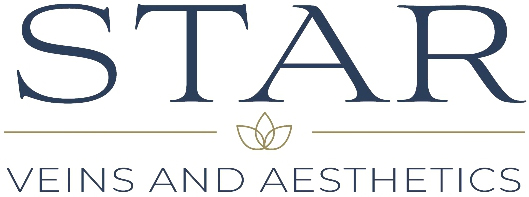What Are the Beginning Stages of Varicose Veins?
Varicose veins are a common circulatory issue that often begin as mild symptoms but can worsen over time if left untreated. In the beginning stages of varicose veins, you might notice:
- Mild swelling and heaviness in your legs, especially after long periods of standing.
- Small, visible veins appearing as thin blue or purple lines beneath the skin.
- Leg cramps or restless legs, often occurring at night.
- Itching or discomfort around the affected veins.
- A feeling of fatigue in your legs after daily activities.
At first, these symptoms might seem minor, but they can indicate an underlying problem with vein circulation. Seeking professional treatment early can prevent complications and improve your overall vein health.
Is Massage Good for Varicose Veins?
Many people wonder, is massage good for varicose veins? While massage can offer temporary relief, it is not a cure. Here’s how massage therapy can and cannot help:
Benefits of Massage for Varicose Veins:
✔ Improves Circulation: Gentle massage can help blood flow more efficiently, reducing swelling and discomfort.
✔ Relieves Tension: It can ease muscle tightness and promote relaxation, which may alleviate some symptoms.
✔ Reduces Swelling: Light lymphatic massage techniques can help decrease fluid buildup in the legs.
Limitations of Massage for Varicose Veins:
❌ Does Not Treat the Root Cause: Massage cannot repair damaged veins or stop varicose veins from worsening.
❌ Risk of Increased Pain: Too much pressure on affected veins can cause pain or even damage weak vein walls.
❌ Not Suitable for Severe Cases: If varicose veins are advanced or painful, massage may not be recommended.
The Best Approach for Varicose Veins Treatment
If you’re experiencing early symptoms of varicose veins, consulting an expert like Dr. Gulshan Sethi is the best course of action. Dr. Sethi is a renowned vein specialist who offers advanced treatments to effectively remove varicose veins and improve circulation.
Effective Treatment Options for Varicose Veins
While lifestyle changes and self-care can help manage mild symptoms, medical treatments are often necessary for long-term relief. Dr. Gulshan Sethi provides several minimally invasive treatments to address varicose veins, including:
1. Sclerotherapy
- A non-surgical treatment where a solution is injected into the affected veins, causing them to collapse and fade over time.
- Best for small to medium-sized varicose veins.
2. Endovenous Laser Therapy (EVLT)
- Uses laser energy to close off damaged veins, allowing healthy veins to take over circulation.
- A quick, effective procedure with minimal downtime.
3. Radiofrequency Ablation (RFA)
- Similar to EVLT but uses radiofrequency waves instead of lasers.
- Highly effective for treating larger varicose veins.
4. Compression Therapy
- Wearing compression stockings to improve circulation and reduce symptoms.
- Often recommended as a supportive treatment alongside medical procedures.
Preventing Varicose Veins: Tips for Healthy Legs
Even if you’re in the early stages of varicose veins, adopting good habits can slow progression and improve vein health. Here are some practical tips:
- Stay Active: Regular walking, cycling, or swimming can help improve circulation.
- Elevate Your Legs: Raising your legs above heart level for 15-20 minutes daily can reduce swelling.
- Wear Compression Stockings: These can provide gentle pressure to help blood flow.
- Maintain a Healthy Weight: Extra weight adds pressure on veins, worsening symptoms.
- Avoid Prolonged Sitting or Standing: If your job requires sitting or standing for long hours, take breaks to move around.
Frequently Asked Questions (FAQs)
Q1: How do I know if I have the beginning stages of varicose veins?
A: Early signs include visible veins, mild swelling, leg discomfort, and occasional cramping. If you experience these symptoms, consult a specialist like Dr. Gulshan Sethi for a proper evaluation.
Q2: Can massage make varicose veins worse?
A: While light massage can help with circulation, deep or intense massage can worsen varicose veins by increasing pressure on weakened vein walls.
Q3: What is the best treatment for early-stage varicose veins?
A: Lifestyle changes, compression stockings, and non-invasive treatments like sclerotherapy are effective for mild cases. Consulting a vein specialist ensures the best approach for your condition.
Q4: Can varicose veins go away on their own?
A: Unfortunately, once varicose veins develop, they do not disappear without treatment. However, early intervention can prevent them from worsening.
Q5: How can I book a consultation with Dr. Gulshan Sethi?
A: You can schedule an appointment with Dr. Gulshan Sethi, an expert in vein treatments, to receive a personalized treatment plan.
Conclusion: Take Control of Your Vein Health
If you’ve noticed the beginning stages of varicose veins, don’t wait until they become more severe. Early treatment and expert care from specialists like Dr. Gulshan Sethi can make a significant difference. While massage can provide temporary relief, it’s not a cure—medical treatments are the best solution for lasting vein health.
Take the first step toward healthy, pain-free legs today! Book a consultation with Dr. Gulshan Sethi and explore the most effective options for varicose vein treatment.
Also Check: Spider Vein Treatment Near Me Long Island – Say Goodbye to Spider Veins

